
Numerical Rock Physics
Abstract¶
Motivated by the need for improved understanding and monitoring of clogging during managed aquifer recharge, we use numerical experiments to evaluate the effect of three different clogging mechanisms on electrical conductivity (EC), porosity, specific surface area, and electrical tortuosity of a simulated sediment pack. The clogging experiments are designed to simulate effect of clogging due to: (a) addition of finer grains, (b) addition of nonconductive films, and (c) addition of conductive films. The simulations involved starting with a random grain pack of 43% porosity, and subsequently reducing the porosity as would occur during clogging. For each of the experiments, we compute the EC response, specific surface area, and electrical tortuosity across the range of porosities. The differences in EC response between (a) and (b) is minor, however, the sediment parameters measuring pore-space configuration show very different responses (i.e., specific surface area and tortuosity), indicating EC is limited in its sensitivity to specific pore configurations. The results from simulations (a) and (b) are well described by Archie’s equation. For the conductive film experiments (c), we explore the effect of film growth for four different surface conductivities ranging from to . These conductivities correspond to a range of 5-35 times more conductive than the pore fluid conductivity. The bulk EC signal for each of the films results in a distinct manifestation in terms of measured bulk EC. We fit the EC response of the conductive film experiments with a model based on volume fraction occupied by the film; although the model fit the observed results, we required a unique set of fitting parameters for each Film conductivity.
Full Paper¶
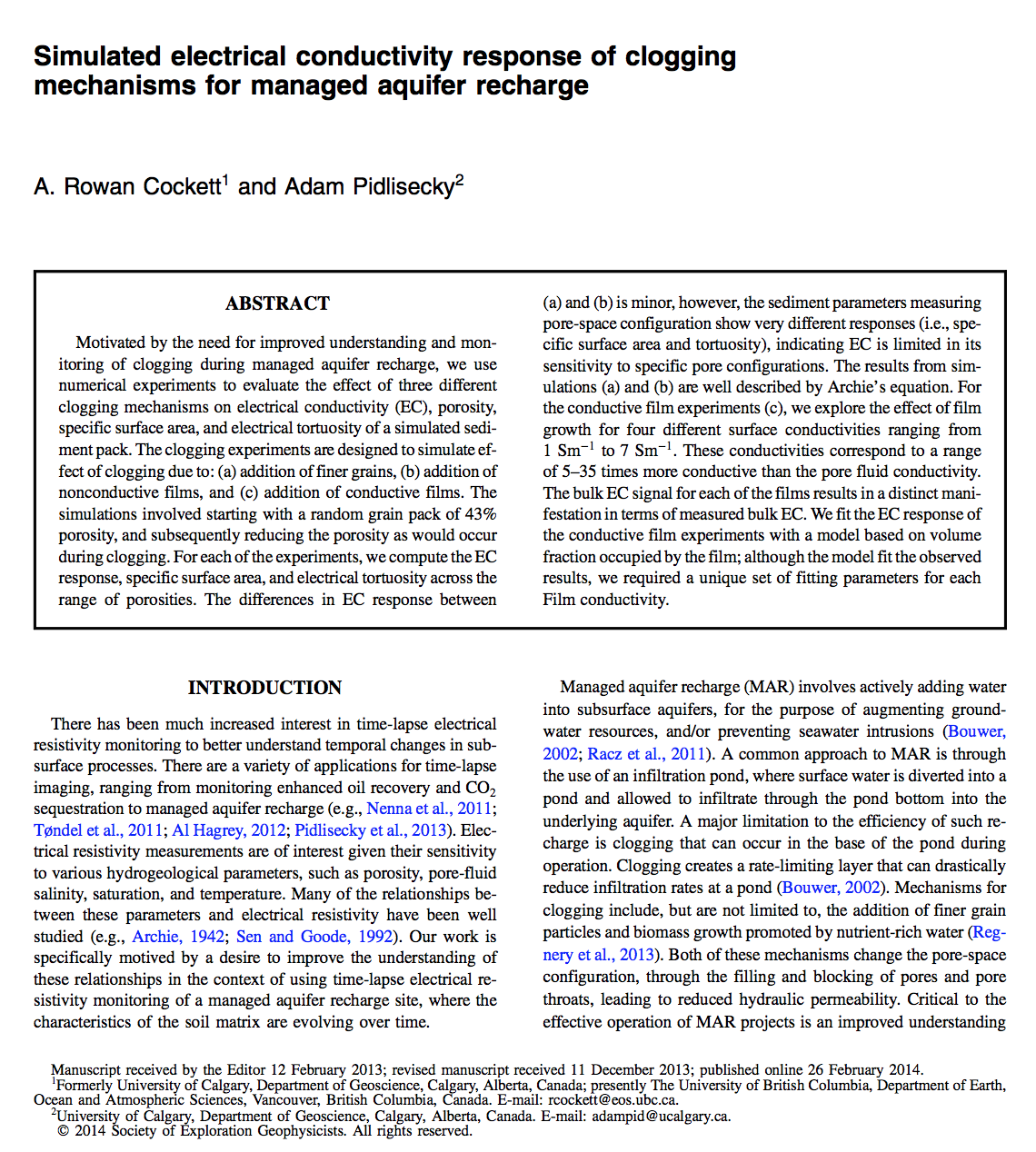
Simulated electrical conductivity response of clogging mechanisms for managed aquifer recharge
Favorite Parts¶
The sensitivity of the electrical tortuosity to the magnitude and positions of conductivity variations reinforces the need to differentiate between the concepts of fluid tortuosity and electrical tortuosity
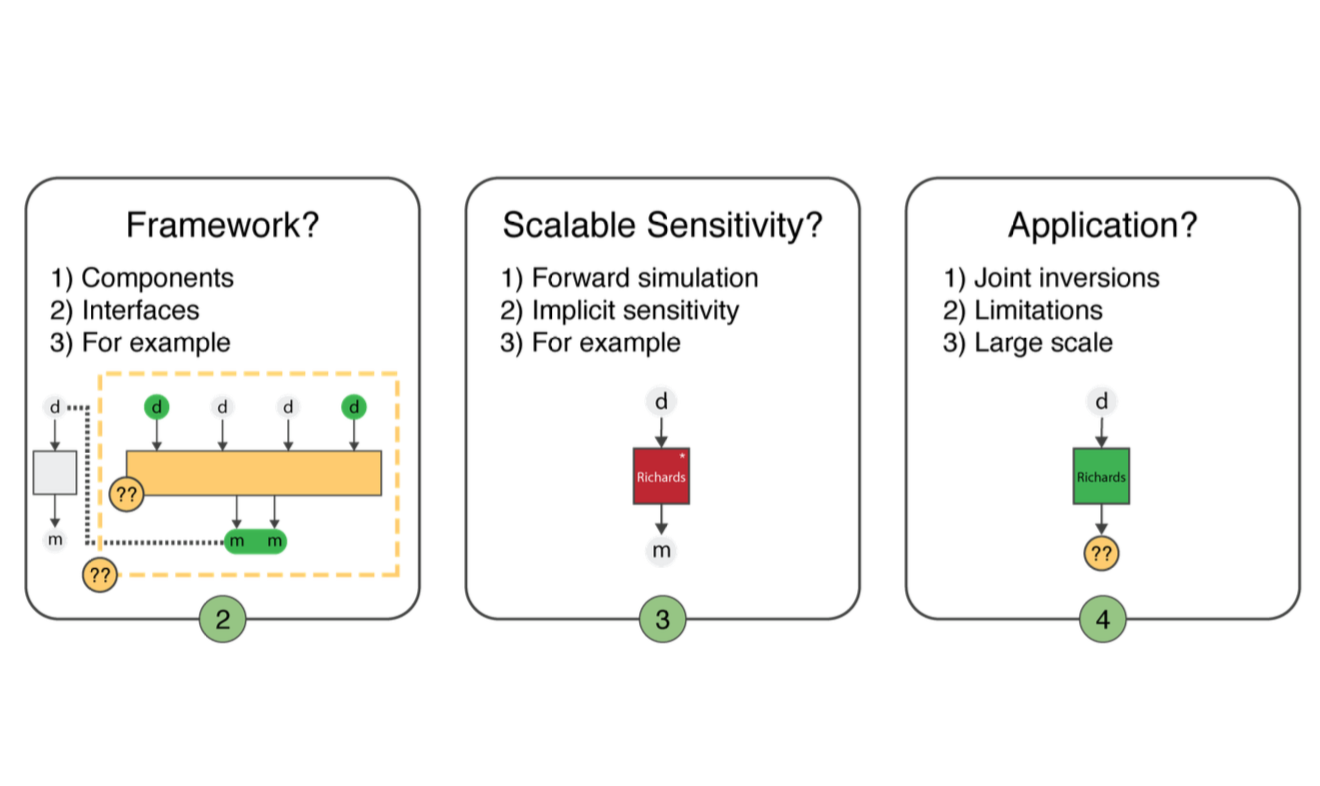
A framework for geophysical inversions with application to vadose zone parameter estimation
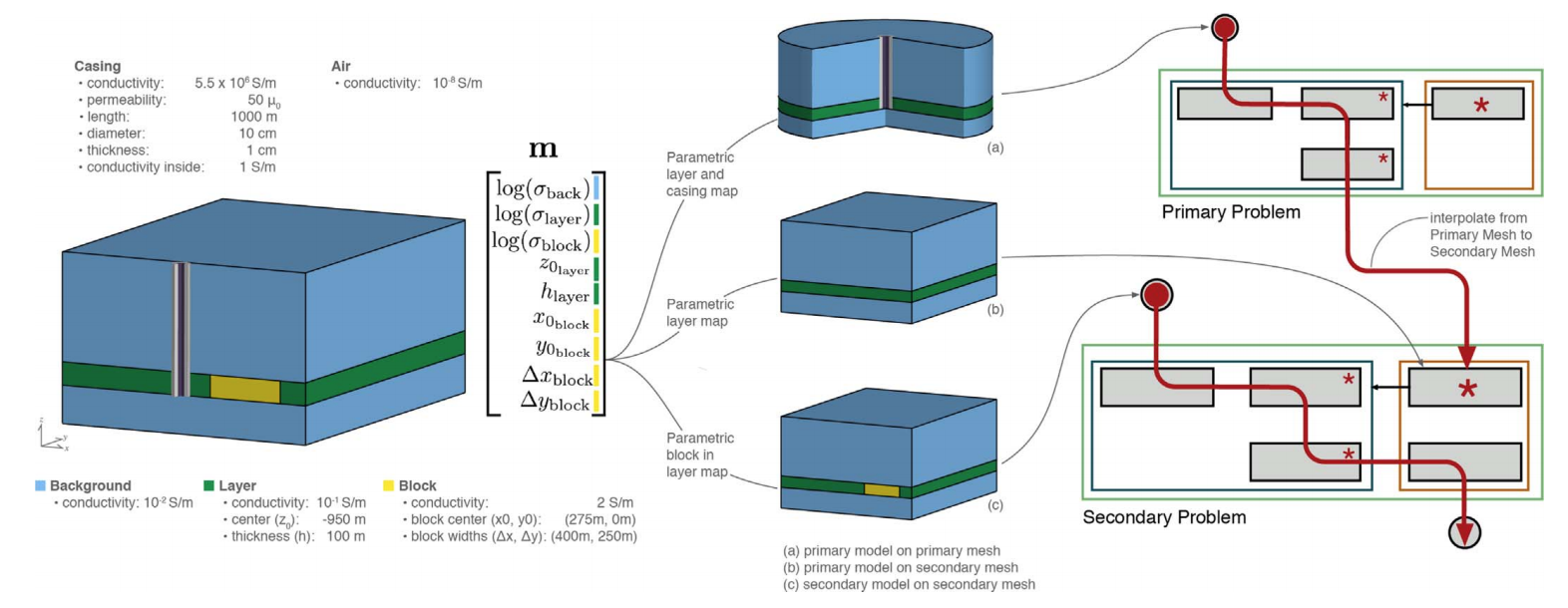
A framework for simulation and inversion in electromagnetics
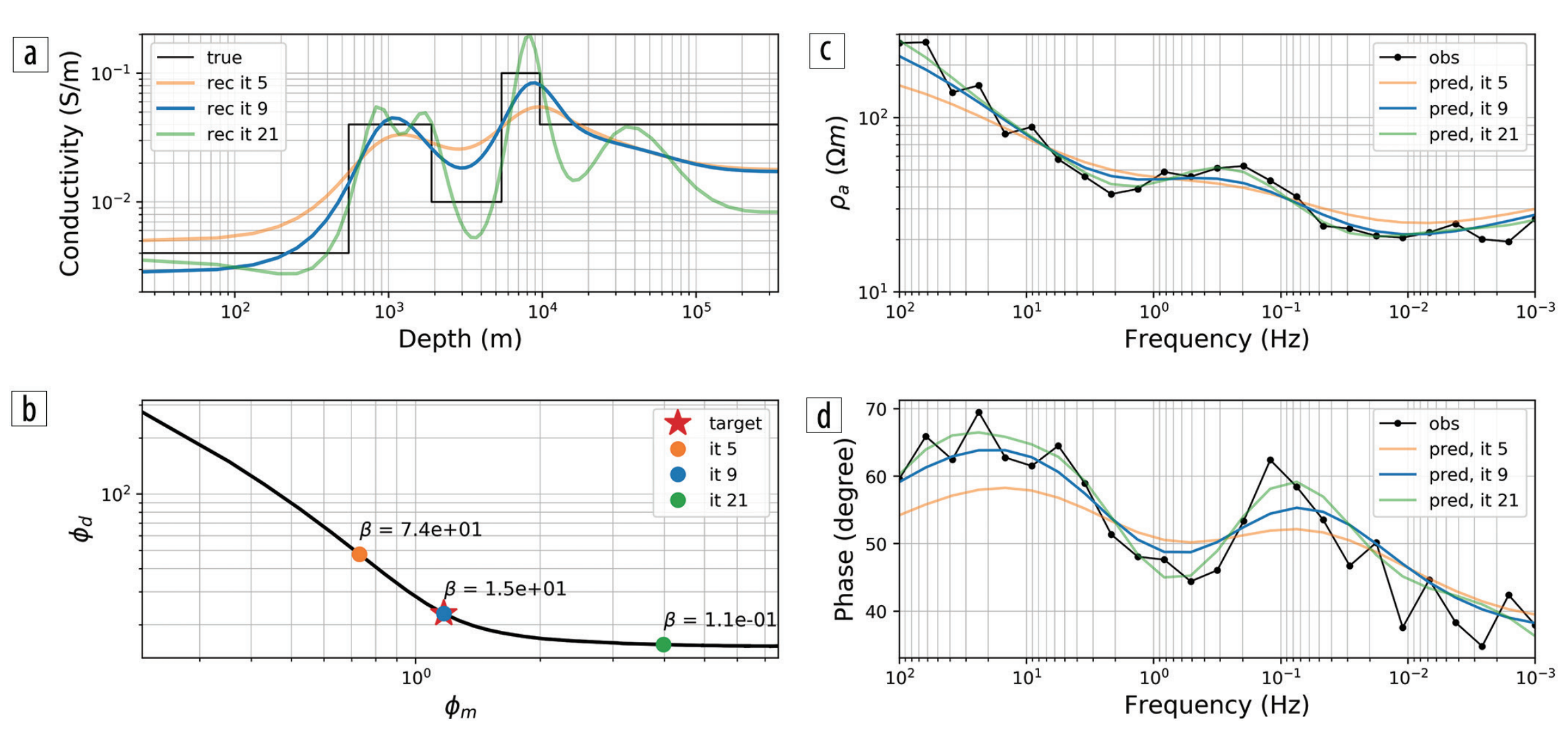
Exploring nonlinear inversions: A 1D magnetotelluric example

Efficient 3D Richards equation inversion.

Visible Geology: Creative online tools for teaching, learning, and communicating geologic concepts
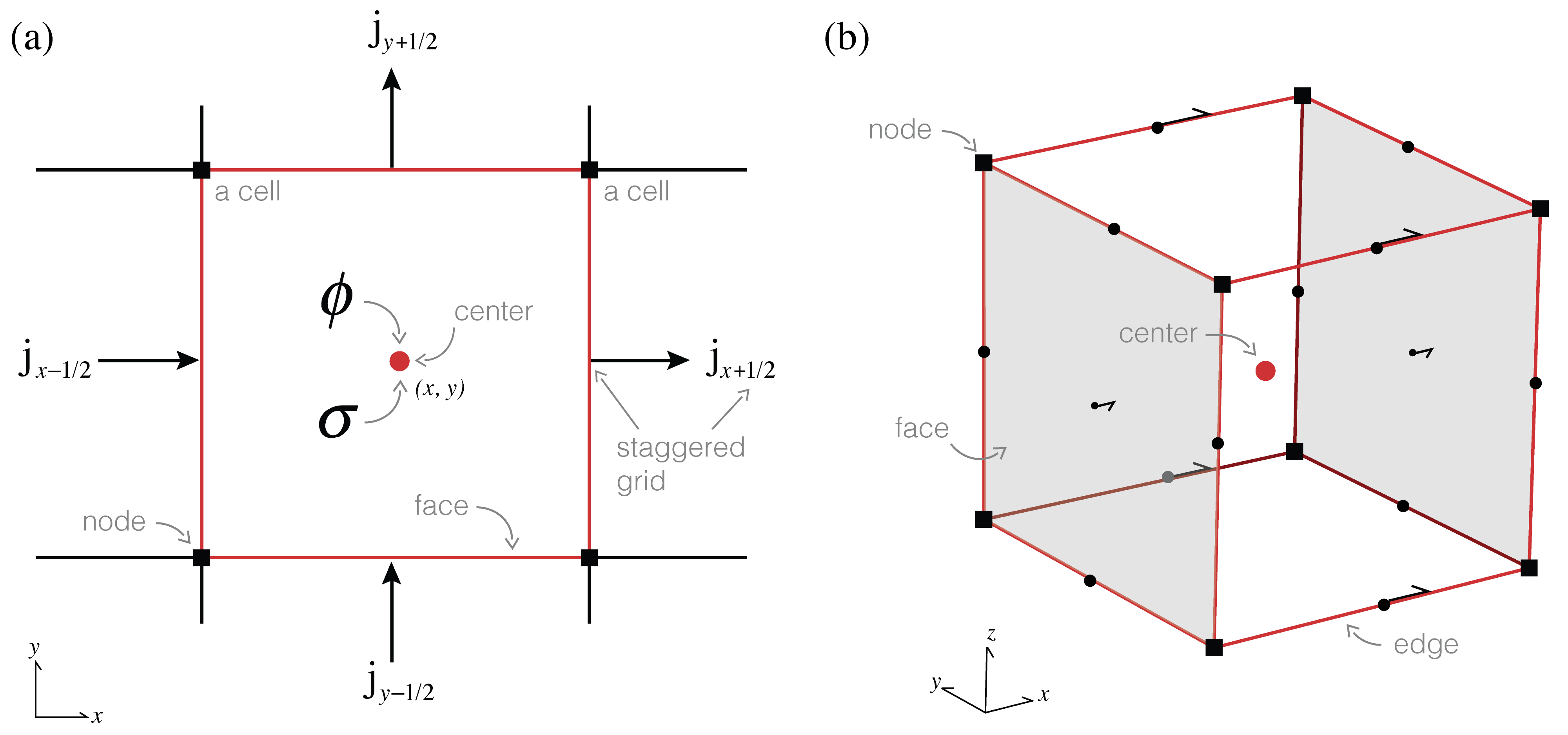
Tutorial on finite volume techniques